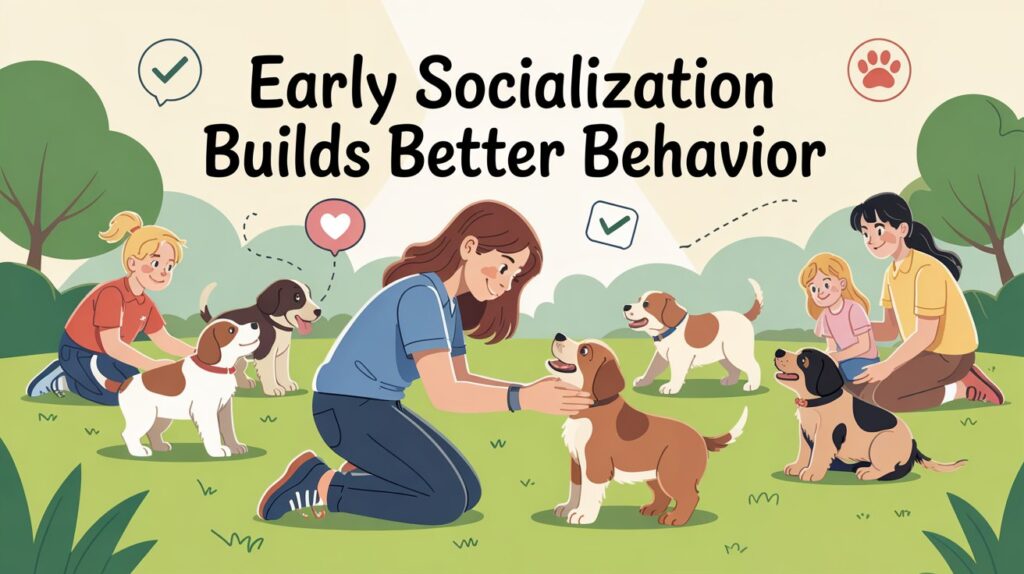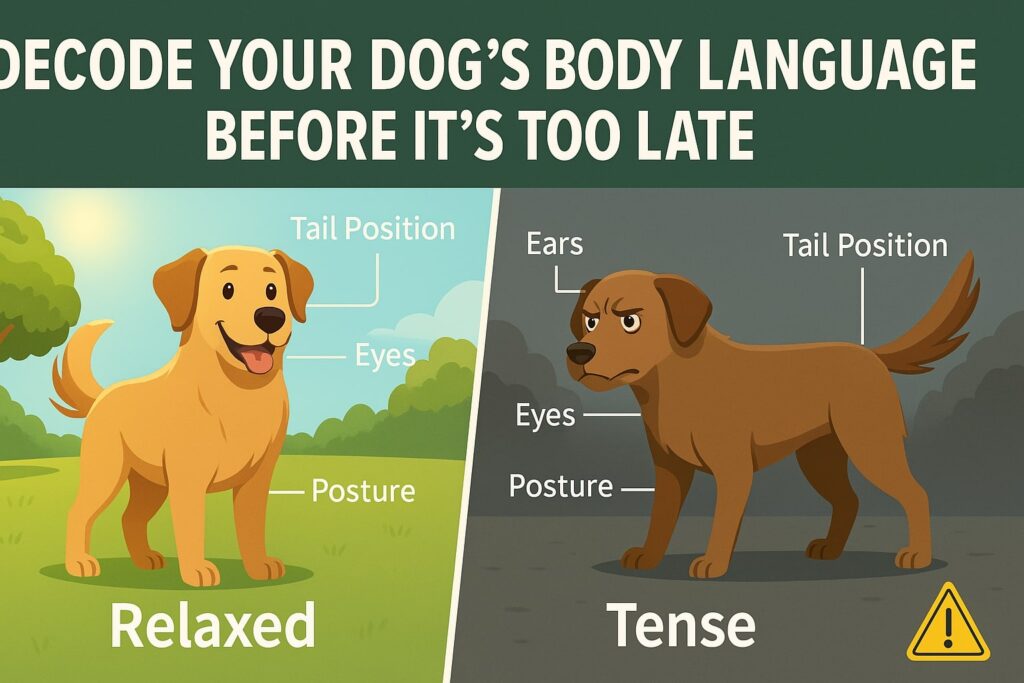Canines communicate through a rich language of body signals, which can often be misunderstood by their human counterparts. An understanding of these signals is pivotal for preventing aggressive behavior and fostering a harmonious bond between dogs and people. Miscommunication can lead to undesirable encounters, making it crucial for dog owners to interpret their pets’ intentions accurately.

Decoding Dog Communication
To navigate dog interactions effectively, it is essential to recognize various canine behaviors. Dogs express their emotions through their posture, tail position, and ear orientation. A relaxed dog typically displays a loose body posture with a wagging tail at mid-height. This signals a friendly demeanor, inviting interaction. On the contrary, a dog that stands rigid, with direct eye contact and a lifted tail, may be feeling threatened or aggressive.
Understanding these indicators empowers owners to respond with appropriate training techniques that promote positive experiences for both the dog and the surrounding individuals. Maintaining a low-key demeanor when communicating with dogs is paramount. Nervous energy can be transmitted from humans to dogs, leading to stress that may trigger defensive reactions. Training focused on calm interactions can help reinforce positive behaviors.
Encouraging calmness and reward-based training can significantly alter a dog’s responses in stressful situations and build confidence. In extreme and unfortunate cases, the team behind Trusted Legal Counsel Matthew Trapani, says that legal assistance may be necessary to resolve issues stemming from dog bites. Keeping interactions positive and consistent can minimize this risk considerably. Regular socialization with other dogs and people can further help your pet feel comfortable in various situations. Consistency in training is key to ensuring that dogs respond appropriately to new stimuli and environments.
Recognizing Signs of Distress
Awareness of signs indicating stress in dogs allows for preemptive measures that can diffuse potentially dangerous situations. Common indicators include lip licking, yawning, and turning their head away. These behaviors often signal discomfort and should not be ignored. A dog backing away or trying to hide indicates that the animal is not comfortable and possibly feeling threatened. Recognizing these signs early can prompt owners to intervene effectively.
Avoiding confrontation and allowing the dog to feel safe can make a significant difference in behavior. Owners should practice training techniques aimed at making the dog feel secure. Examples include counter-conditioning, where positive associations are formed with previously fear-inducing stimuli, resulting in a calmer demeanor. This form of training takes patience and consistency but helps cultivate a trusting relationship between the dog and their environment.
Enriching the Environment for Positive Behavior
A dog’s living environment plays a significant role in their behavior patterns. Creating a safe and enriching space can lead to happier, more relaxed dogs. Offer a variety of toys, places to explore, and opportunities for social interactions with both humans and dogs. Regular exercise is crucial; daily walks and play sessions help to alleviate energy and stress. Training should also incorporate positive reinforcement strategies to cultivate better behavior.
Rewarding dogs for displaying calm behavior during encounters with others reinforces those responses. In training sessions, focus on teaching commands that help dogs manage excitement, such as “sit” or “stay,” which can redirect their energy in social contexts. A structured approach towards these interactions reduces anxiety and the likelihood of aggressive responses.
Encouraging Positive Social Interactions
Proper socialization during a dog’s early development stage greatly influences behavior later in life. Introducing them to a variety of environments, people, and other animals while ensuring these experiences are positive fosters well-rounded behavior. This exposure allows dogs to become accustomed to different scenarios and reduces anxiety in new situations. Group training classes can serve as a valuable resource in this regard.
These classes allow dogs to practice social skills in controlled environments under the guidance of trained professionals. Encouraging appropriate interactions with other dogs and people helps dogs learn how to express themselves without resorting to aggression. A well-socialized dog understands the norms of canine behavior, resulting in fewer misunderstandings and conflicts.

The Role of Professional Help and Ongoing Training
For owners encountering persistent behavioral issues, seeking professional help can be beneficial. Certified dog trainers and behaviorists possess the expertise to address specific problems and offer tailored advice. They can identify underlying causes for aggressive behavior and provide effective strategies to remedy it.
Consistent training is key to reinforcing desired behaviors. A dog’s learning process continues throughout its life; therefore, regular practice ensures that they retains what they have learned. Training should prioritize patience and understanding, encouraging dogs to engage positively with their humans and surroundings.
By cultivating a sound understanding of dog body language alongside ongoing education and training, owners can greatly reduce the potential risk of bites and enhance the pet’s overall well-being. The responsibility for creating a positive environment and enabling a safe society for dogs and humans alike rests with all of us.

